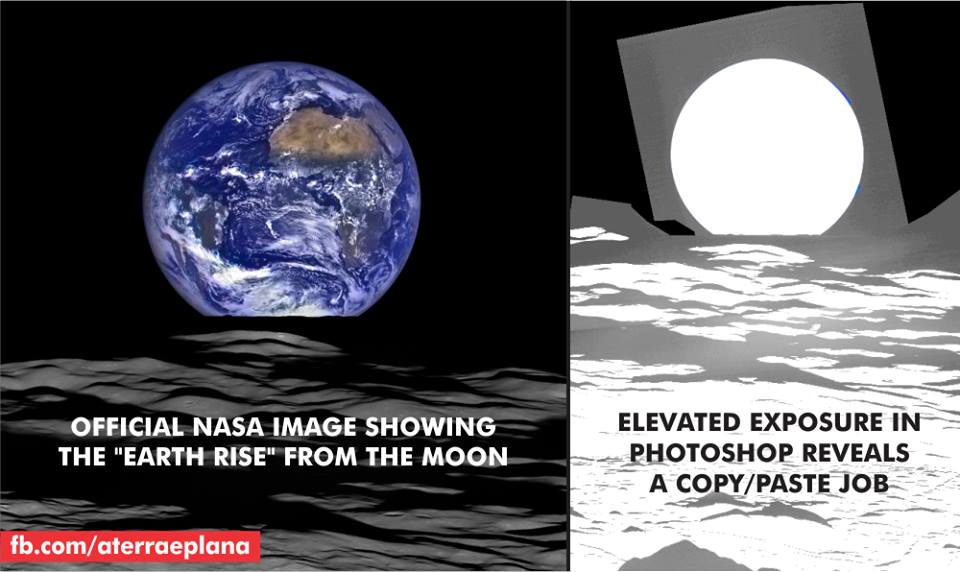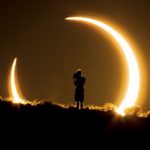- This topic has 6,423 replies, 23 voices, and was last updated 3 weeks, 1 day ago by
 Proclaimer.
Proclaimer.
- AuthorPosts
- May 7, 2018 at 6:33 am#825573
 mikeboll64Blocked
mikeboll64BlockedT8: …the famous and perplexing Double Slit Experiment in physics even alludes to observation being of primary importance before anything becomes even physical.
Are they suggesting that a flower doesn’t actually exist unless someone happens to be looking at it?
May 7, 2018 at 6:53 am#825574 mikeboll64Blocked
mikeboll64BlockedGene: Mike even if my calculation figures were wrong, the formula works exactly as it should… The formula workd the same.
Gene, is 24 inches the same as 8 inches? Yes or no, please?
Gene: SHOW ME ONE TRUE MATHMATION THAT DOESN’T KNOW THAT…
Rather, you show me the true mathematician that doesn’t agree with the 8 inches per mile squared formula. See if you can find one anywhere online, anywhere in the world.
May 7, 2018 at 6:57 am#825576 mikeboll64Blocked
mikeboll64BlockedT8: By that reckoning, we should observe auroras thousands if not millions of times more in my part of the world than the north pole.
You’re in NZ, looking south towards a very small fragment of the ice wall. Why then should you see auroras any more frequently? Who else is out that far from the center, besides Argentina? So imagine the entire outer ring is glowing with auroras… who will actually see them?
May 7, 2018 at 7:03 am#825577 mikeboll64Blocked
mikeboll64BlockedT8: The fact remains, you should still observe the sun after it dissappears, and at varying distances, because the sun would eventually be blocked by mountains at random distances.
Did you watch the video of the sun being lifted back up from “setting behind the horizon”? Because you didn’t comment on it. Or on the one where the sun shrinks dramatically in size as it “sets” (moves farther away from the observer). Please watch and comment on those, as they were both in direct response to comments you made.
As for the point you’re trying to make above… why can’t we see every single star in the entire heliocentric universe?
May 7, 2018 at 8:55 am#825581 mikeboll64Blocked
mikeboll64Blockedt8: “Good question. A quick google showed me this:
the vacuum of space does not exert any force on the atmosphere at all. It does not “suck” the air. We associate the word “suck” with “vacuums” but it’s a misnomer. That’s not what vacuums do.
Consider an example where we’ve pumped all of the air out of some box and created a vacuum inside of it. Let’s say we’re on Earth, at sea level, and we poke a hole in the box. What will happen?
Air will rush into the box and fill it. Okay. But why did it do that? Was it because the vacuum sucked the air into the box? No.
What’s actually happening there is that the air pressure around the box is forcing air into the space with no pressure. The air that fills the box is being pushed by air pressure into the empty space.
Vacuums never “suck” air. What they do is present an empty space and then air pressure forces the air into the vacuum.
Air pressure is not uniform throughout the atmosphere. The lower the altitude, the higher the air pressure; thus, as you move higher, the air pressure decreases. In fact, at the upper limits of the atmosphere, the air pressure reduces to basically nil.
And since there’s no real air pressure to speak of up there, then there is no force pushing the air into the empty space.
Of course I can neither prove this or disprove this. That would take time and resources. But it sounds logical on the outset.”D4T: Basically nil? We are told that gravity holds down the atmosphere. As the air becomes thinner the higher you go there is less gravity supposedly, therefore less force holding it in. (Remember that a vacuum is extremely powerful as the example of the railroad car imploding illustrates! And that was with a much less powerful vacuum!)
I don’t think that because the air is thin that a vacuum would ignore it. In fact it could argued that a vacuum would devour the thinner air more quickly. This would then be replaced by more air from lower areas and then the process would continue.
We know that water is denser than air. If the moon effects the ocean tides would it not also effect the atmosphere?
I could understand if the process of the vacuum drawing off our atmosphere was slower than one might imagine, but not at all is way too much for the scientific part of my brain to believe. Given the illedged billions of years of earth’s age this becomes even more implausible.
I liked Mike’s example of the moon lander. Yeh, I wouldn’t take that to the top of a mountain much less the vacuum of space.
And we can keep it simple. When experiments have been done where there are different pressures of gasses they have always equalized when exposed to each other. Or even closer to this topic the gas always equalizes in a vacuum.
Good response, D4T. The most general answer you’ll get on Google as to why our atmosphere doesn’t disperse into the vacuum of space is “GRAVITY!” The article T8 found is one of the few that take it a step farther by basically playing semantics games. You can say the higher pressure area will “push” into the lower pressure area, or you can say the lower pressure will “suck” from the higher pressure. For example, when you drink from a straw, are you “sucking” fluid up through the straw? Or are you creating a lower pressure area in your mouth, causing the higher pressure area in the glass to “push” its way into your mouth?
But if you take these semantics to the next level, and ask how we came to have a pressurized atmosphere in the first place, it will bring you right back to “GRAVITY!” For example, his article says, Air pressure is not uniform throughout the atmosphere. Okay… why not? Why is there any “pressure” associated with air at all? And their answer is that gravity pulls on these tiny gas molecules that somehow found our earth through the endless vacuum of space, and congregated here. And gravity doesn’t just pull the individual gas molecules towards the earth; it pulls them with such force that it actually squishes and compacts them so tightly that the end result is a system pressurized to 14.7 pounds per square inch at ground level. Of course as you move farther from the source of the gravitational pull (the earth), the pull gets weaker, and doesn’t squish and compact the higher air as tightly. Move even farther away, and the gas molecules are squished and compacted even less. And so on.
Now, like just about everything else associated with the heliocentric model, the idea of some force called “gravitas” by Isaac Newton is complicated, and is refuted by many lines of observational data. This whole heliocentric model is like one can of worms stacked on another, which is stacked on another… and so on until the cows come home. I mean, we started talking about how our pressurized atmosphere doesn’t disperse into the hugely powerful vacuum of space, and that opens up the can of worms known as “gravity” – before we even get to the other cans of worms associated with this topic, like solar winds that should be stripping our atmosphere away, angular momentum from the rotation of the planet, and regular everyday gas pressure – which would cause our atmosphere to disperse even before the molecules got heated up by being compressed.
But T8, we have no choice but to discuss gravity in order to discuss why our atmosphere doesn’t get “sucked” or “pushed” into the near perfect vacuum of outer space. So perhaps you could start by telling exactly what “gravity” is, how it works, and how we were able to verify it. (The answers are, “we don’t know”, “masses somehow attract each other for unknown reasons”, and “we never have”. But feel free to check these things out for yourself, and get back to us with what you find.)
May 7, 2018 at 9:03 am#825582 mikeboll64Blocked
mikeboll64BlockedD4T: Hey Mike, about how long do you think that moon transit was? I would guess maybe several to 6 hours of time? Maybe more?
Funny but the clouds didn’t change shape. Hmm.
According to NASA, it was 5 hours. And funny indeed that none of the cloud formations changed in that time. I’ve never experienced a day when the clouds in the sky stayed exactly the same for 5 minutes – let alone 5 hours. But as you know, the faker it looks, the realer it is. 🙂
May 7, 2018 at 9:27 am#825583 mikeboll64Blocked
mikeboll64BlockedD4T: Hey Mike, I thought this was interesting.
Man measures star distances using parallax trigonometry. By choosing two measurable observation points and making an imaginary triangle to a third point, and using simple trigonometry, man calculates the distance to the third point.
The most distant observation points available to an earthbound observer are the positions of the earth in solar orbit six months apart, say June and December. This would create a triangle of 186,000,000 miles, which equals only 16 light minutes. There are 525,948 minutes in a year. Even if the nearest star were only one light year away (and it isn’t), the angle at the third point measures .017 degrees.(Mike, this assumes the very thing that we are debating – that the earth revolves around the sun. If it doesn’t then what about that parallax stuff.)
In simpler terms, a triangle like this would be the same angle two surveyors would see if they were standing sixteen inches apart and focusing on a third point 525,948 inches or 8.24 miles away. If they stayed 16 inches apart and focused on a dot 824 miles away, they would have the same angle as an astronomer measuring a point 100 light years away.
http://amazingdiscoveries.org/C-deception_stars_lightyears_distance#!
Good catch! They’re basing their assumption that they could measure a parallax angle – the equivalent of 16 inches apart and 8+ miles away from the object – on their assumption that in June, they are 186 million miles distant from their December location, due to their assumptions concerning the earth’s orbit around the sun.
That’s a whole barrel full of assumptions just to claim they can measure the distance to a star 100 light years away. And they assume that the farthest star we can see with the naked eye is 16,000 light years away. Imagine the tiny angle on that one. I wonder if they’ve taken into account their assumption that our whole solar system is flying through space millions of miles per hour, which means the earth’s location in any give June or December could never be its location the following June or December… nor would our distance to these various stars ever be the same.
Simply fascinating how I never questioned these kinds of nonsensical claims for the vast majority of my life. I just blindly believed because a “scientist” said so.
May 7, 2018 at 9:33 am#825584 Dig4truthParticipant
Dig4truthParticipantI suppose one experiment would be to have a container with very few particles of our atmosphere, like at the top of our atmosphere and then expose it to a vacuum. What would happen? I think we all know the answer.
The particles would equalize with the vacuum container. It is a law of physics. But somehow it magically doesn’t do that on our earth.
We also know that water can take the shape of any container it is in but it never conforms to the outside of a container, much less one that is spinning around at 1,000 mph! But magically it does on our earth.
We can also calculate the distance at which an object can be seen on the surface of a sphere. Using math and having all of the variables we can know what we should be able to see and what we should not be able to see. On our magical earth objects can be seen that would place them well below the horizon.
And we’re the ones called crazy!
May 7, 2018 at 9:55 am#825585 Dig4truthParticipant
Dig4truthParticipantDid mention that water always finds its level? Another knd of important point.
Also, if we were on a sphere we could never see the horizon at eye level. On a sphere all direction move away and down from the observer. However, if we are looking thru a drone at a 1,000 feet, a plane at 35,000 feet or a ballon at 114,000 feet the horizon is always at eye level!
Keep in mind that if two 6 feet tall people were standing next to each other and walked only 3 miles apart there would be a 6 foot drop in curvature. Meaning that they supposedly could not see each other. That is using the ball-earth math!
So at say 100,000 feet high there should be a noticable drop of the horizon but there isn’t.
If you have the time this is a good video. You can get the substance of from about 2:30 – 6 or 7 minutes.
May 7, 2018 at 10:16 am#825586 GeneBalthropParticipant
GeneBalthropParticipantTo all, don’t get draged into this flat earth bs. Simply go to the hundreds of sites that absolutely prove over and over in simple terms the earth is round in humdreds of ways, even with actual photos from the space station thousands of them. These flat earth conspiracy theorest are rejucting proven truths. They even edit vidios of scientists explaining it even removing parts , like the one where it says we have not ventured out in space., leaving off, “in over 40 years”, making it out that we never can go past a ccertain point. Check it out for yourselves, the have exactly what the flat earthers said, “suposely” quoting Nasa, and they have the actual words that they edited out (in 40 years) hear it for yourselves, these flat earthers are nothing more then fabercators of lies, do not believe them, check it out for yourselves, go to some of the many sites that prove the earth is round, don’t be sucked in by these conspiracy theories.
Every thing Mike and some others say here can easely be explaind by any true scientist and mathematicians. This is nothing more then a waste of your time, a deception created to lead people away from what we should truly be descussing, the kingdom of God and his rightiousness. Be careful Satan has many ways to try to throw us off from what we truly need to be talking about here. Hope you are hearing this T8.
Peace and love to you all and yours…….gene
May 7, 2018 at 10:19 am#825587 mikeboll64Blocked
mikeboll64BlockedCrazy like a woke fox! 😀 Here we go, in order of ability for anyone to verify…
- We can see things farther away than would be possible were the earth really a ball 25,000 miles in circumference.
- We can see the moon being increasingly eclipsed from the top down, proving beyond any doubt that it is not the earth causing the shadow.
- We can see full moons in the daytime, proving beyond all doubt that it is not the sun that lights the moon.
- We can verify that gas molecules will always disperse from high pressure to low pressure, until ALL OF THEM are equalized.
You know what test I want to see NASA do? Aside from fitting their rockets and astronauts with all kinds of 360 cameras that never stop streaming video, I’d like them to go back to the famous vacuum chamber where they reportedly dropped a bowling ball and a feather, which fell at the same speed. I want them to put an astronaut in the chamber, equipped with the same equipment that they have when doing space walks on the ISS. On a table next to him will be a Stretch Armstrong toy, a can of soda, a beaker of water, a bowling ball, and a feather. He must drop the ball and feather before they start pumping out the air – to make sure it’s legit. As they pump the pressure out of the system, the astronaut should remain comfortable, as the vacuum won’t be anywhere near what he experiences in space. But as the air is pumped out, we should see the water start to boil and evaporate. He can pick the beaker up, and move it around for the cameras, a la Vanna White on Wheel of Fortune. Then we should see the Stretch Armstrong toy bloat up like the Michelin Man… until he finally explodes his innards all over the place. And we’ll see the soda can also explode all over the place, while the contents boil and evaporate. We note that the astronaut is still completely comfortable, because it’s still not anything like he’s already used to in the vacuum of space. At this point, he needs to pick up the ball and feather again, and drop them so we can see them fall at the same speed. Oh, and when the limit of the vacuum has been reached, I want one of the techs on the outside of the chamber to drill a tiny hole in the side, put his finger there, and tell us if it feels more like his skin is being “sucked” into the chamber, or merely “pushed” in from the outside. 🙂
What do you think? Shall we write to NASA and request they do something like that?
May 7, 2018 at 10:35 am#825588 Dig4truthParticipant
Dig4truthParticipantGene: “Check it out for yourselves”
That’s a great idea Gene. And that’s all we’re really asking, check it out for yourselves. That’s how the growing masses of FE people all got started!
May 7, 2018 at 10:46 am#825589 mikeboll64Blocked
mikeboll64BlockedGene: To all, don’t get draged into this flat earth bs. Simply go to the hundreds of sites that absolutely prove over and over in simple terms the earth is round in humdreds of ways, even with actual photos from the space…
Here’s one of the first of those “actual photos from the space”, Gene.
[video src="https://media.giphy.com/media/1qYGx5zvdYKM1oN4PX/giphy.mp4" /]
All he did was grab the photo off the official NASA website, put it in an image editing program, and adjust the levels. Do you see the colored square around the earth – showing that it was pasted in?
May 7, 2018 at 10:55 am#825590 mikeboll64Blocked
mikeboll64BlockedHere’s another one, Gene…

And another…

How do you explain those squares around the images when you increase the levels? These are your “actual photos from the space”… and they are photo-shopped fakes.
Also, I’m still waiting for you to tell me if 24 inches is the same thing as 8 inches. What is your answer to that question I asked you?
May 7, 2018 at 11:08 am#825593NickHassan
ParticipantHi Mike,
So all who came before are liars and thieves?
Flat earthers alone possess the truth.
hmmm
May 7, 2018 at 11:44 am#825594 GeneBalthropParticipant
GeneBalthropParticipantNick, yea these “johnny come lately’s”, all the sudden know more then hundered of thousand of scientest, astronauts, astronomers, mathmaticions, physicists, who have proven the earth is round over and over know. Now that is the amazing part to me, when all anyone has to do is go to the hundreds of web site that shows clearly the errors they use in “their”, so-called flat earth, observances and math calculations, conspiracies theories, and they actually even have followers.
It only shows you, how truly gullable people can be. I hope T8 comes to see the truth, thats all we need is the one who runs this site to fall for that garbage.
Peace and love to you and yours. ……..gene
May 7, 2018 at 11:58 am#825595 ProclaimerParticipant
ProclaimerParticipantGene, what gives you the idea that I think the Earth is flat. I am arguing that it is not.I have no doubt it is sphere. lol.
May 7, 2018 at 12:30 pm#825597 ProclaimerParticipant
ProclaimerParticipantAurora frequency argument
You’re in NZ, looking south towards a very small fragment of the ice wall. Why then should you see auroras any more frequently? Who else is out that far from the center, besides Argentina?
So your saying my basic premise is correct, but I need to consider that NZers and Argentinians only see a small percentage of the outer disk. Thus there are actually thousands or millions of more auroras on the edge of the disk as opposed to the north or centre as you might call it due to a much larger area. I can’t imagine that no one has noticed this supposed fact if it were true.
If you say the north had 50 auroras in the north per year, then that could be about 50,000 auroras somewhere on the edge of the disk or multiplied by how much the edge and surrounds is compared to the North Pole and surrounds. If so, fishing boats travelling in the Southern Ocean would probably be in continuous auroras at night right.
In fact, according to the Flat Earth map, there could well be more edge than the whole rest of the disk, so a land area comparison of the edge and the North Pole would show the edge being many times greater in distance.
May 7, 2018 at 12:42 pm#825598 ProclaimerParticipant
ProclaimerParticipantTracking the sun experiment
Did you watch the video of the sun being lifted back up from “setting behind the horizon”? Because you didn’t comment on it. Or on the one where the sun shrinks dramatically in size as it “sets” (moves farther away from the observer). Please watch and comment on those, as they were both in direct response to comments you made.
Not yet Mike. But if you really wanted to prove that the Earth is flat, you could run this experiment yourself with ease. Try doing it with the moon first and if you need further clarification, do it with the sun and video recorder in front of the lense. Given that both emit light or reflect it, you should be able to track it for quite a while after it dissappear from the naked eye. Repeat said experiment in a different location in the US to see if you get a wide disparity of distance visible due to nearest blocking mountains being a different distance. In fact if the distance is always the blocking mountains then that would go some way to prove what you believe. Would need yo include mountains beyond horizon of course.
As for the point you’re trying to make above… why can’t we see every single star in the entire heliocentric universe?
All the stars we see are sun’s and a few are planets in our galaxy. Andromeda galaxy is so distant that the whole thing appears as one star. But put a powerful enough scope on it and it becomes apparent as to what it is. Of course I realise you would argue that photos of Andromeda are fake.
May 7, 2018 at 3:20 pm#825603 ProclaimerParticipant
ProclaimerParticipantThe moon’s gravitational force
If the moon has enough gravitational pull to move ocean water on the surface of the earth then why would it not also pull atmosphere away?
The Earth easily wins the gravitational tug of war. The moon still has an influence and the fact that there are different tides depending on where the moon is backs up this up.
- AuthorPosts
- You must be logged in to reply to this topic.


